How to Use a Birthing Ball for a Better Birth
A birthing ball is an exercise ball that helps ease pregnancy symptoms, but can also encourage a less painful more straightforward birth. It’s a must-have for every pregnant woman hoping …
Birthing tools help parents get in different and better positions, which decrease the pain of childbirth and encourage labor progress. They help parents have a less painful and faster birth!
Women planning a natural childbirth are most likely to seek out alternative methods of pain relief. However, even those planning for an epidural will find benefits in tools like the peanut ball, birth ball, or massage. Have a conversation with your care provider or hospital to find out what tools and equipment are available.
Use the following birthing props, tools, and techniques for pain relief during labor.
A birthing ball or pregnancy ball is one of the most common birthing tools used. A birth ball is used during pregnancy and birth to ease discomfort and encourage labor.
Don’t be fooled! A birth ball is simply an exercise or yoga ball repurposed for birth. Birthing balls come in a few sizes – 55 cm, 65 cm, and 75 cm. Make sure to buy the correct size birthing ball for your height.
Many women enjoy sitting on a birth ball as early as the first trimester to ease pelvic pressure, relieve back pain, and prepare the body for labor. Sitting on a birthing ball is the most common position, but there are more ways to use a pregnancy ball besides sitting.
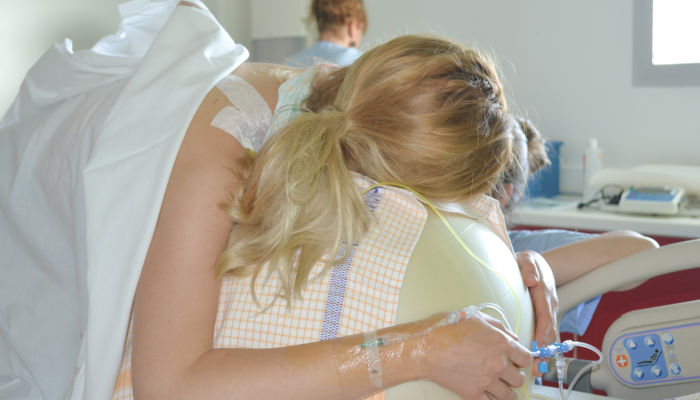
A birth stool or chair is an excellent birthing tool because it opens the pelvis as if a woman is squatting, but without the work of a squat. Squatting is a desired birthing position because it opens the pelvis quite well, allowing more space for baby to come through. However, a squat is very difficult to sustain. By the time a woman is ready to push, she feels extremely exhausted, and has little energy to squat during push.
A birthing stool assists women in an upright position with an open pelvis, but without the strain. A common birthing stool is the CUB (comfortable upright birth) which is an inflatable birthing stool. Both hospitals where I live offer them as a birthing tool.
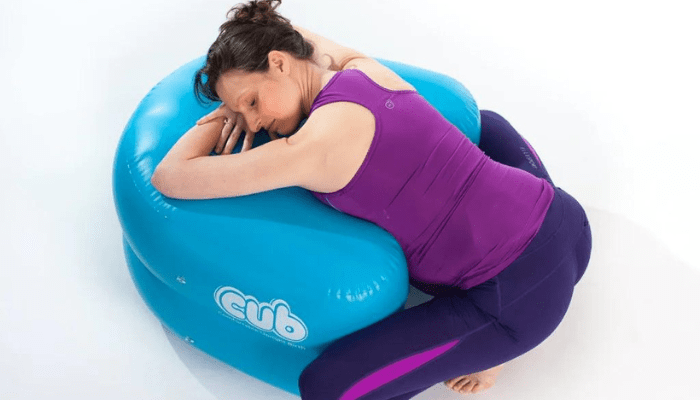
A birth bar, sometimes called a squat bar, is an attachment for labor and delivery beds that makes it easier to squat in labor. A birth bar allows for easier squatting, kneeling, and pushing at birth.
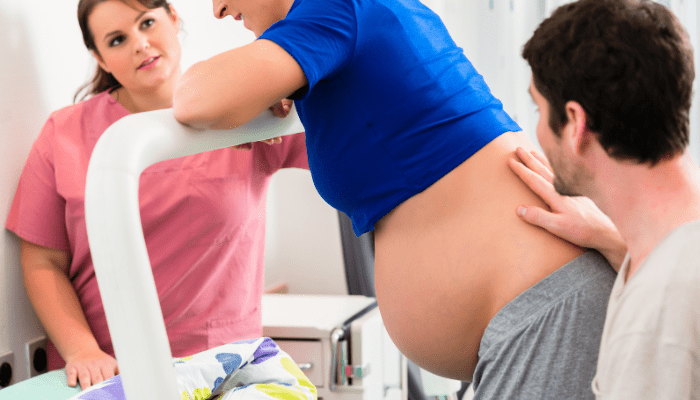
Studies show that when a peanut ball is used during labor it shortens the laboring time and pushing time. If you find yourself in bed during labor, especially with an epidural, make sure you’re using a peanut ball.
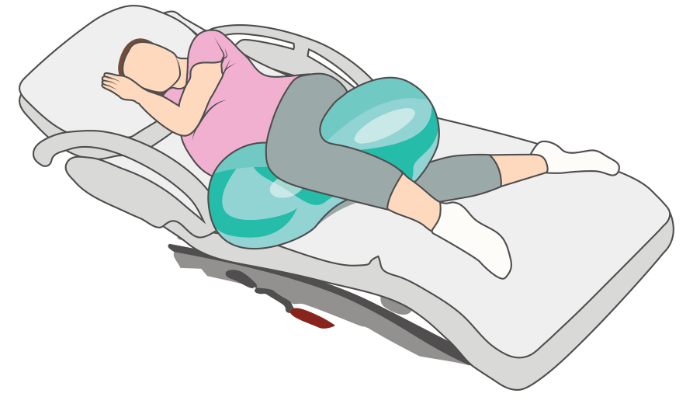
Warm water in a tub or shower is a wonderful way to reduce tension and pain in labor. Birth tubs allow parents to submerge the whole belly, alleviating pressure and making it easier to change positions. Some parents even give birth in water!
Showers are a quick and easy way to experience the benefits of hydrotherapy in labor. Some parents find it helpful to aim the warm water on the belly or back to pinpoint relief during contractions. I think a shower is a wonderful place to labor during transition.
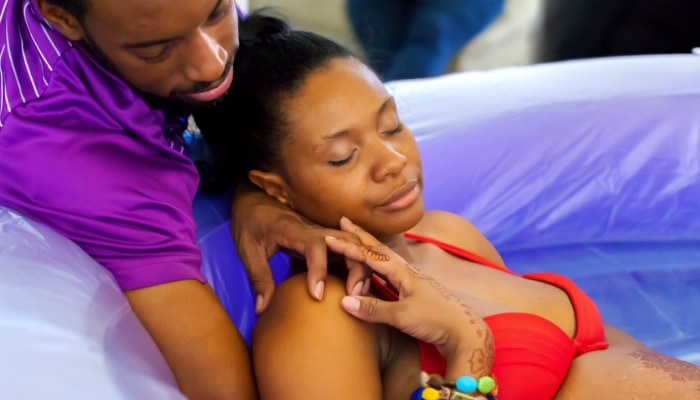
Massage interrupts the brain talking with the body about pain. What does that mean for birth? When a woman is massaged in labor it decreases her perception of pain, making for a less painful more satisfying birth.
Massage also decreases tension during birth. Whenever a woman is able to decrease tension, it will decrease her pain as well.
Massage doesn’t need to be complicated. Use a lotion or massage oil, scented or unscented, with firm, long, downward strokes for the best result. The shoulders, back, or hands are a good place to start massaging a woman in labor.
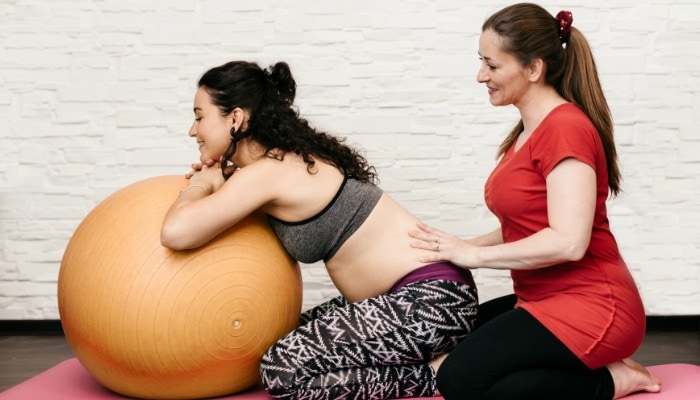
Ever heard of someone using a tennis ball or rolling pin in labor? These birthing tools provide counter pressure to the lower back and hips, which decrease pain during contractions. However, I’ve never used a tennis ball or rolling pin at a birth.
The easiest way to help a woman in labor with counter pressure is to simply use the hands with firm pressure to the sacrum or hips. Counter pressure is best used during contractions and not between. Everybody needs to rest between contractions.
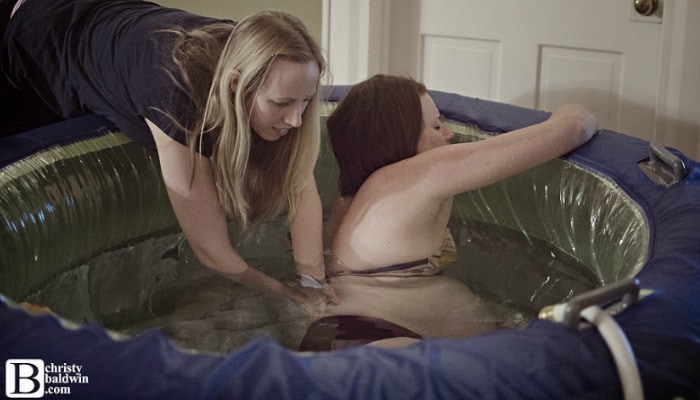
Changing labor positions is one of the best birthing tools parents can use to decrease pain and encourage labor progress! Different positions helps alleviate pain, as some positions feel better than others. Changing positions also helps labor to progress, because movement shifts the pelvis and baby, encouraging further descent.
The 5 best labor and birthing positions are:
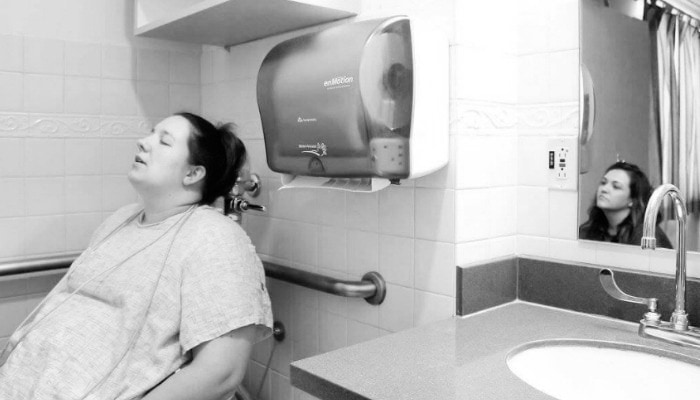
One of the biggest ways parents cause suffering for themselves in labor is to mentally think about what’s to come. Anything that brings parents back to the present moment will decrease pain and suffering. The easiest way to stay in the present moment is to pay attention to the breath, or use breath awareness.
Simply bring all your focus and attention to the breath – you don’t have to change your breath, or breathe differently. Just notice what’s already happening. Breath awareness is one of the most effective and simple birthing tools parents can use during labor to decrease pain.

Here you’ll find more resources, articles, and inspiration for birthing tools. Enjoy! :)
A birthing ball is an exercise ball that helps ease pregnancy symptoms, but can also encourage a less painful more straightforward birth. It’s a must-have for every pregnant woman hoping …
A gentle c section is a cesarean birth that is heavily focused on supporting the new family as a unit throughout the birth process, and less on traditional medical procedures …
It is 100% possible to get through transition without an epidural! This article is FULL of wonderful information about how to do just that. Let’s go! What is Transition? Birth …
Many women in my childbirth classes and those that hire me for doula support often ask for tips on how to labor at home as long as possible. In fact, one …
These 30 bible verses for labor and delivery bring comfort during the end of pregnancy and throughout the intensity of any type of birth – natural birth, medicated, or a …
The right birthing ball size will help pregnancy aches and pains, but also encourage labor progress. However, not every woman will use the same size ball. Use this guide to …
Mother Rising’s beautiful, free birth affirmations encourage and strengthen parents as they navigate through one of the most wonderful and difficult journeys of their lives. The heart expands with love …
The 411 contractions rule is an easy way to know when to go to the hospital. – when each contraction is 4 minutes apart, 1 minute long, and has been …
As a childbirth instructor, I am fascinated by pain, our responses to it, and how to make painful experiences better. Because of this, I have found many, many ways to …
The following are helpful tips and tricks on how to progress prodromal labor, a frustrating and exhausting end of pregnancy phenomenon, as soon as possible. Of course, if you’re experiencing …
Perineal massage is a technique done during the last few weeks of pregnancy and the pushing stage of labor, all with the aim of preventing tearing during birth. But does perineal …
Natural Birth 101: What It Is, Why You’d Want One, and How to Make It Happen When a woman hears the term natural birth, many words, images, thoughts, and emotions come to …